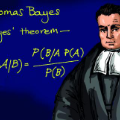Bayesian causal structure learning aims to learn a posterior distribution over directed acyclic graphs (DAGs), and the mechanisms that define the relationship between parent and child variables. By taking a Bayesian approach, it is possible to reason about the uncertainty of the causal model. The notion of modelling the uncertainty over models is particularly crucial for causal structure learning since the model could be unidentifiable when given only a finite amount of observational data. In this paper, we introduce a novel method to jointly learn the structure and mechanisms of the causal model using Variational Bayes, which we call Variational Bayes-DAG-GFlowNet (VBG). We extend the method of Bayesian causal structure learning using GFlowNets to learn not only the posterior distribution over the structure, but also the parameters of a linear-Gaussian model. Our results on simulated data suggest that VBG is competitive against several baselines in modelling the posterior over DAGs and mechanisms, while offering several advantages over existing methods, including the guarantee to sample acyclic graphs, and the flexibility to generalize to non-linear causal mechanisms.
翻译:贝叶斯因果结构学习旨在学习有向无环图(DAG)上的后验分布和定义父节点和子节点变量关系的机制。通过采用贝叶斯方法,可以推断因果模型的不确定性。在有限的观测数据下,因果模型有可能是不可识别的,因此,建模模型不确定性的概念对于因果结构学习尤为重要。本文介绍了一种新的使用变分贝叶斯方法联合学习因果模型结构和机制的方法,称之为变分贝叶斯-DAG-GFlowNet(VBG)。我们使用 GFlowNets 扩展了贝叶斯因果结构学习方法,不仅学习结构的后验分布,还学习线性高斯模型的参数。我们在模拟数据上的结果表明,VBG 在模拟 DAG 和机制的后验分布方面与几种基线方法竞争力强,并具有相对于现有方法的多种优势,包括保证抽样无环图,并具有推广到非线性因果机制的灵活性。

